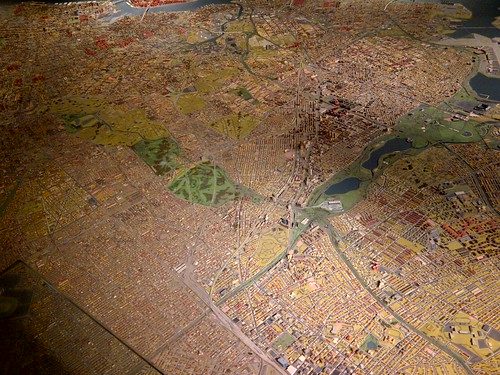There was a lot of music and theater that I missed this past month and a half. I had tickets for Ian McKellen and Patrick Stewart on Broadway and tickets to see Chris Cornell and Mavis Staples. Worst of all, I missed Lucero (even if it was at the dreaded Terminal 5).
The reason I missed all these is because my mother had two strokes. She’s finally back in her home in Salinas but for six weeks she was living in various hospitals and I was living with her 24/7 while my sister readied my mother’s home for her return and traveled back and forth between there and the hospital.
While at Centro Médico in San Juan I was able to take a couple of afternoons off. For one afternoon I took the Tren Urbano from one end to the other. You can read about it here. There were a lot of beautiful murals in Santurce. It’s a depressed area but you can see the gentrification happening in small pockets of the neighborhood. Before the museum on my other afternoon off I walked around Santurce again.
On December 12, I went to Museo de Arte de Puerto Rico. I've been there several times and there are certain exhibits that I'm always happy to see.
One is a permanent exhibition called “No Crying in the Barbershop” by Pepón Osorio. Inside the room salsa music is playing and there are two barber chairs covered in plastic flowers and PR flags. The walls are pink and are covered in hubcaps and photos of famous PR males. There's a life-size statue of Jesus bent over and wounded surrounded by plastic flowers. A woman came in while I was looking around and I explained the piece to her because she said she liked it but didn't know what it was. It's a commentary on machismo and after moving to NYC the barbershop is where all the men would gather.
The piece is overwhelming and every time I see it I discover something new.
Another friend (but not as old) is the painting of Luis Muñoz Marín (former PR governor) – “Retrato de Luis Muñoz Marín” by Francisco Rodón. It's actually 20 years older than Barbershop but the first time I saw it was the last time I was at the museum, which was around 2006. They've moved it to top of the stairs and it is alongside three paintings – a construction worker, a factory worker, and a farmer – all done in the 1930s/WPA/Soviet poster style. All three are from the late 50s/early 60s and are by well-known PR artists.
One new exhibit is a room full of portraits. Many of the portraits are self-portraits of the artists whose work is hanging elsewhere in the museum. It's interesting to see their take on themselves and how it compares to their landscapes or political work.
Dennis Mario Rivera did his self-portrait as a woodcut. It's amazing (I can't find a photo of it). It's huge and they have both the woodcut and the painting made from the woodcut.
You see a lot of the same names over and over but one you see a lot is Lorenzo Homar. He also has a few works in an exhibit dedicated to woodcuts, linocuts, and silkscreens. The most famous is a woodcut called “Unicorn on the Island.”

There were several linocuts called “Coffee” from Rafael Tufiño, who was also well-represented in the museum.
This is one of the silkscreens – I don't know the artist.
Another room was dedicated to posters. This one is “Peace, peace, peace…one of these damned days” by Carmelo Sobrino.
One room was called “Plátano Pride” named after a photo by Miguel Luciano of a boy with a huge gold plátano around his neck.

The other pieces in the room are modern interpretations of two well-known paintings. One is called “Our Daily Bread” by Ramón Frade and the other is “Plátanos amarillos” by Francisco Oller (the most famous PR artist.


This is Victor Vazquez' “Our Daily Bread”

Carlos Dávila Rinaldi – “Gringomatic: No One Can Wash Away That Plantain Stain.”

Charles Juhász-Alvarado built a chess set based on Marcel Duchamp ready-mades:
Epic Jefferson's “Meta-Piano Extended” – multi-media installation with sound. The piano plays slowly but can also be controlled by the wooden computer keyboard with unmarked keys.
Oller's most famous work is “The Wake” depicting the all-night celebration that used to take place when a child died. (It was believed that the child would immediately go to heaven as an angel.) Oller is actually criticizing the ritual by depicting the priest only looking at the roast pig and the drunken bacchanal surrounding the dead child. The only person looking at the child is a Freeman.
The museum once had an exhibit dedicated to the “The Wake” with modern interpretations surrounding it. This time, in a smaller room, were some of those interpretations. One of my favorites from a few visits ago and on exhibit yesterday is a large diorama of the painting with the scene taking place inside an apartment in the US and the views outside from the original are just paintings on the wall. The artist puts himself in the middle holding the roast pig and wearing a hat with a PR flag on it.
Here is the original:

One of my favorite things to do at the Museo is to walk around the sculpture garden and the pond.
By Carene Lydia Lopez











